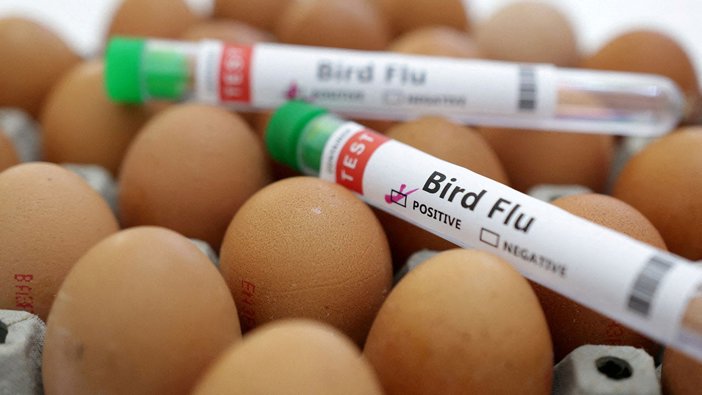
Bird Flu Surge in Germany Could Drive Egg & Poultry Price Jump
Germany’s avian influenza wave may translate into higher egg and poultry costs for consumers this holiday season.
Germany is facing an intensifying outbreak of avian influenza that shows no sign of slowing, according to agricultural experts and industry leaders. While the virus primarily threatens poultry farms, the economic impact is increasingly becoming a concern for households. As culling operations expand into the hundreds of thousands of birds, fears are growing that consumers may soon feel the consequences through higher prices for eggs and poultry products — especially heading into the holiday season.
Industry officials warn that the current situation remains highly dynamic, with infection hotspots emerging across the country, affecting farms of all sizes and poultry types. While supply shortages are not imminent at this stage, the poultry sector is urging heightened caution and strict biosecurity to avoid the further spread of the virus and disruptions in the food supply chain.
A Crisis Still Far From Its Peak
Experts say Germany has not yet reached the peak of the current outbreak. New cases are being reported in rapid succession, pointing to a rising infection curve as migratory birds continue arriving during the autumn season.
Robert Schmack, Chairman of the State Association of the Bavarian Poultry Industry, described the current market as already strained. In remarks to public broadcaster Bayerischer Rundfunk, Schmack explained that prices for eggs and poultry meat have been high for months — and could rise further:
“Egg prices could increase by as much as 50 percent again — I cannot rule that out,” he said.
While consumers should not expect completely empty shelves in supermarkets, Schmack warned that certain premium product segments, such as free-range and organic eggs, may face temporary shortages due to farm quarantines and precautionary housing measures imposed on flocks.
To fill potential supply gaps, some retailers might consider imports. However, Schmack opposed this solution, emphasizing that Germany should strive for self-sufficiency in essential food products:
“We have the ambition to supply ourselves with our own products as far as possible,” he said.
Reassurances From the Industry — At Least for Now
Not everyone in the sector is equally concerned about shortages or steep price surges. Hans-Peter Goldnick, President of the Central Association of the German Poultry Industry, said he believes there will be enough poultry meat and eggs for the coming holidays.
“If everyone adheres to the required security measures, we have a good chance of keeping the virus outside our farms,” Goldnick stated in a joint morning program by ARD and ZDF.
“Then there will be enough poultry meat and enough eggs — including at Christmas.”
Goldnick stressed that price developments vary across poultry products. For example, the majority of goose meat consumed in Germany does not come from domestic farms:
Only about 20 percent of geese eaten in Germany are German-produced, while approximately 80 percent are imported from Hungary and Poland.
This market structure means that avian influenza outbreaks within Germany do not directly dictate goose prices — though widespread disruptions across Europe could still influence the retail level.
With the traditional goose slaughter season starting in early November ahead of St. Martin’s Day, the next few weeks will be critical in determining how the virus continues spreading.
“We must observe closely how this wave moves through Germany and Europe,” Goldnick said.
He acknowledged that if the situation were to escalate dramatically, prices could adjust accordingly — but maintains confidence in the current containment strategy:
“Fundamentally, I believe we can keep this under control.”
An Unusually Early and Widespread Outbreak
One major concern this year: timing.
Avian influenza typically sees an uptick beginning in November. But this season, the virus has struck earlier and more aggressively than usual. Goldnick described it as an “extraordinary” situation:
“There are unusually many outbreaks across the entire country and across different poultry species. We have not experienced this pattern in recent years.”
The combination of early onset, rapid spread, and broad geographic reach complicates containment efforts. The risk is driven heavily by infected wild birds, which can transmit the virus through droppings in water and on surfaces.
Government Calls for Coordinated European Action
Alois Rainer, Germany’s Federal Minister of Agriculture, addressed the urgent need for a unified European response. During a meeting with his EU counterparts in Luxembourg, he highlighted the particularly intense spread of the disease in wild bird populations this year.
“A coordinated and harmonized approach is incredibly necessary,” Rainer said, warning that both food supply stability and agricultural livelihoods are at stake.
The minister reiterated that Germany is working to protect livestock while preserving trade continuity:
Efforts are underway to contain the virus as effectively as possible in order to minimize any disruptions to the food and agriculture economy.
The Threat From Migratory Birds
The Friedrich-Loeffler-Institute (FLI), Germany’s leading authority on animal health, continues to observe the situation closely. Its president, Christa Kühn, warned that migrating bird populations — now moving across Europe in large numbers — are driving the high infection pressure.
“The migration is in full swing, and the virus load from infected wild birds and their excretions is very high,” Kühn said.
“We continue to see a very dynamic situation.”
So far, roughly 30 commercial poultry farms have been forced to cull their flocks, according to FLI data. That number could rise sharply if the virus continues spreading along migratory routes.
The disease can jump from species to species, especially in densely populated agricultural regions, making ongoing surveillance critical.
The seasonal nature of bird migration means the situation could continue evolving well into winter, prolonging market pressures.
Global Parallels: A Look at the United States
Germany’s current outbreak echoes events seen abroad. About one year ago, the United States experienced a severe wave of avian influenza that led to the culling of tens of millions of hens. The result:
Egg prices surged dramatically in the spring, and many supermarket shelves were temporarily empty.U.S. media reported that during fall and winter 2024 alone, approximately 50 million laying hens had to be destroyed — a massive economic and supply shock.
Analysts warn that Germany should treat that episode as a cautionary tale: if the virus spreads deeper into domestic production, the ripple effects on consumer markets could be swift and costly.
What Comes Next?
While officials stress reassurance — no need for panic-buying or stockpiling — questions remain:
- Will stricter confinement measures for flocks become mandatory nationwide?
- How long will elevated infection risks from migratory birds persist?
- Can farms maintain sufficient protective protocols to avoid further outbreaks?
- What happens if neighboring EU countries see parallel or worsening outbreaks?
If the virus remains contained within manageable limits, the impact on shelves and wallets may stay moderate. But if infection clusters continue rising, the tight balance between supply and demand could quickly shift.
The market outlook ultimately hinges on one factor: whether biosecurity holds firm against the high-pressure conditions of the migratory season.
For now, both consumers and producers are being asked to brace for uncertainty — and hope that the critical weeks ahead bring stabilization rather than escalation.
Source: ntv.de yahoo.com tag24.de welt.de






